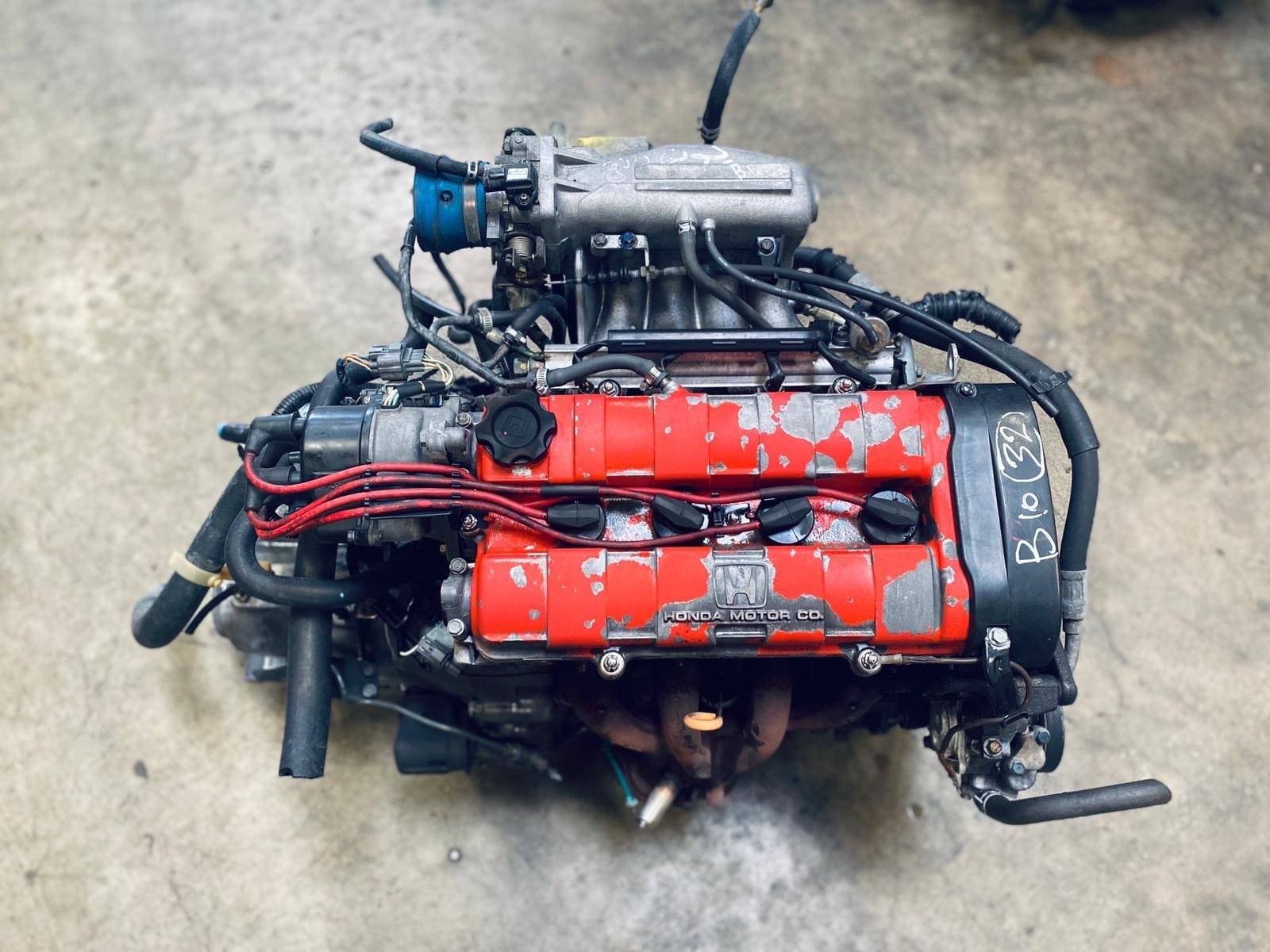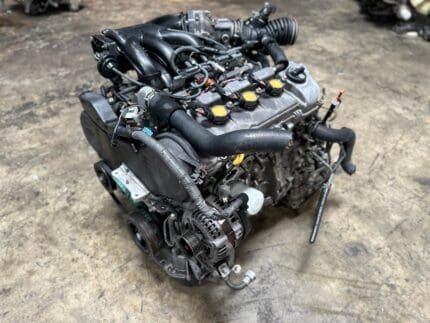Honda Civic 4th Gen ZC DOHC Twin Cam Engine: A Complete Guide
Buy JDM Honda Civic 4TH GEN ZC DOHC TWIN CAM ENGINE MOTOR OBD1 1.6L 5 SPEED S20 M/T MANUAL TRANSMISSION for sale online, The Honda Civic has been one of the most iconic and widely loved compact cars worldwide. Among the many different generations of the Civic, the 4th generation (1988–1991) stands out for its balanced performance, design, and reliability. Within this generation, the ZC DOHC (Double Overhead Cam) Twin Cam engine deserves particular mention due to its advanced engineering and strong performance. If you’re a car enthusiast, a collector, or a mechanic, understanding the history, specifications, and performance characteristics of the 4th Gen Honda Civic ZC engine is crucial. Here’s an in-depth look at the Honda Civic 4th Gen ZC DOHC Twin Cam engine.
Overview of the Honda Civic 4th Gen ZC DOHC Twin Cam Engine
The 4th generation Honda Civic was introduced with a wide variety of engine options, but the ZC DOHC Twin Cam engine is considered one of the more performance-oriented choices. The ZC engine debuted in the Japanese market as part of the Civic’s engine lineup, and it was known for its rev-happy nature, efficient performance, and solid build quality.
- Engine Code: ZC
- Type: Inline-4
- Configuration: DOHC (Double Overhead Cam)
- Displacement: 1.6 liters (1590cc)
- Fuel System: Carburetor (for some variants), Multi-Point Fuel Injection (for later models)
- Horsepower: Approximately 130–140 hp (varied by model and market)
- Torque: 140–145 Nm
- Compression Ratio: 9.5:1
- Redline: 7,500 rpm
- Application: Primarily used in the 4th gen Honda Civic, but also found in other Honda models of the era.
Key Features of the ZC DOHC Twin Cam Engine
-
Double Overhead Camshaft Design: The ZC engine features a DOHC configuration, meaning it has two camshafts per cylinder bank. This design enables better intake and exhaust valve control, contributing to more efficient combustion, higher performance, and a smoother overall driving experience. The DOHC setup also allows for higher engine speeds (rpm), which results in better power output at higher revs.
-
Twin Cam Technology: The ZC engine’s twin cam technology enhances its ability to breathe at high rpm. This system uses two camshafts per cylinder head, each controlling the intake and exhaust valves independently. It improves the efficiency of the engine and contributes to the engine’s high-revving capabilities, making it a favorite among performance enthusiasts.
-
VTEC (Variable Valve Timing and Lift Electronic Control): Some variants of the ZC engine were equipped with Honda’s VTEC technology, which adjusts the timing of the intake and exhaust valves at different engine speeds. This allowed for a better balance between fuel economy and performance, with more power available at higher revs while maintaining efficiency at lower speeds.
-
Durability and Longevity: The ZC engine was built with longevity in mind. Honda’s engineering quality ensured that the engine could last for hundreds of thousands of kilometers with proper care. Regular maintenance, such as oil changes, timing belt replacements, and valve adjustments, helped extend the life of the engine.
Performance Characteristics
-
Acceleration: The ZC engine in the 4th Gen Civic is known for its responsive throttle and ability to push the car from 0 to 60 mph in just around 8–9 seconds, depending on the variant. This made it quite competitive with other vehicles in its class at the time.
-
Fuel Efficiency: Even though the ZC engine is a performance-oriented unit, it maintained a relatively good fuel economy, averaging about 28–30 mpg (miles per gallon), which was considered excellent for a sporty compact car in the late 80s and early 90s.
-
Handling: The 4th Gen Civic’s lightweight design, combined with the high-revving nature of the ZC engine, gave it exceptional handling. The car was able to remain agile, nimble, and fun to drive, with minimal body roll.
Common Issues and Maintenance Tips
Like all engines, the ZC DOHC Twin Cam engine is not without its potential issues. However, many of the common issues are preventable or easily fixed with regular maintenance. Here are some common concerns:
-
Timing Belt: The timing belt should be replaced every 60,000 miles or so to prevent any damage to the engine. If the belt fails, it could result in major engine damage.
-
Valve Adjustment: Regular valve adjustments are needed to keep the engine running smoothly and to maintain optimal performance. It’s recommended to check the valve clearances every 15,000–30,000 miles.
-
Oil Leaks: Over time, oil seals and gaskets can start to leak. This is a common issue in older engines, and while it’s not critical, it’s important to address it before it leads to more serious problems.
-
Cooling System: The engine is sensitive to overheating, so ensuring that the radiator, thermostat, and water pump are functioning properly is key to maintaining engine health.
-
Carburetor Tuning (for Carbureted Models): Older models with carburetors may require periodic tuning to ensure smooth idling and fuel efficiency.
FAQ on Honda Civic 4th Gen ZC DOHC Twin Cam Engine
Q1: What makes the ZC engine different from other Honda engines?
The ZC engine is unique due to its DOHC configuration and high-revving nature. It’s designed to provide a balance between performance and reliability, making it suitable for both daily driving and more spirited driving. Its high rpm range and variable valve timing (in some variants) provide an exhilarating driving experience.
Q2: How much horsepower does the ZC engine produce?
The ZC engine typically produces between 130 and 140 horsepower, depending on the variant and market. This is quite impressive for a 1.6-liter engine from the late 1980s and early 1990s.
Q3: Is the ZC engine reliable?
Yes, the ZC engine is known for its reliability and longevity when properly maintained. With routine maintenance like oil changes, valve adjustments, and timing belt replacements, the ZC engine can last for several hundred thousand miles.
Q4: Can I swap the ZC engine into another Honda?
Yes, the ZC engine is popular in engine swaps for older Honda models, especially for enthusiasts looking to upgrade from carbureted to fuel-injected engines or simply seeking better performance. It’s compatible with various Civic models, as well as other Honda vehicles from the same era.
Q5: What is the redline of the ZC engine?
The ZC engine has a redline of around 7,500 rpm, which allows for a high-revving, spirited driving experience. This is one of the reasons why the engine was so beloved by performance enthusiasts.
Q6: What type of fuel system does the ZC engine use?
The ZC engine initially used a carburetor system, but later models (especially those with VTEC) switched to Multi-Point Fuel Injection (MPFI), which provided better fuel management and efficiency.
Q7: How can I improve the performance of my ZC engine?
Common performance upgrades for the ZC engine include a high-performance exhaust system, intake manifold, camshaft, and a better fuel management system. For those with VTEC, tuning the VTEC engagement points can improve power delivery.
Conclusion
The Honda Civic 4th Gen ZC DOHC Twin Cam engine stands as a testament to Honda’s commitment to engineering quality and performance. While it may not have the same recognition as some of Honda’s other iconic engines like the B-series, the ZC engine still holds a special place in the hearts of enthusiasts. Whether you’re looking to restore a classic, replace an old engine, or simply learn more about this legendary powertrain, the ZC engine remains an excellent example of Honda’s innovative engineering.
By understanding the key features, potential issues, and performance capabilities of the ZC engine, owners and enthusiasts can ensure their engines run smoothly and continue to provide the thrilling driving experience that the Honda Civic is known for.







Reviews
There are no reviews yet.